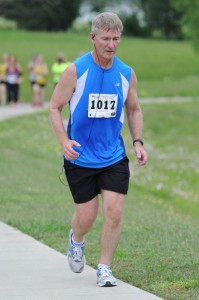Finding time to get enough exercise is difficult for everyone, especially if you have children. If you are looking for a new way to have a great time with your kids and get in shape, you should consider starting a running plan for your entire family. With just a few easy steps, you will all be getting exercise and enjoying wonderful family time.
Safety First
Before you start running together, you need to make sure everyone has the proper gear. If you plan on running regularly, each of you need to have a good pair of shoes. You don’t need to go broke buying new, expensive shoes for everyone, just make sure that each pair fits and has good support. Most tennis shoes will be fine for the children, until they decide whether they want to run seriously.
Make sure each person has reflective clothing to wear as you run together. If you have small children who may become too excited and run away from the group, you may want to consider using a halter type device to keep them from running into the street. If you have very small children, you don’t need to leave them out of the fun. Many companies sell running strollers that are lightweight and easy to push as you run.
How to Start
If you want to run to have fun and not to prepare for a marathon, then playing games with your children is the best way to start. Play tag or have races in the backyard. Make up silly games and run all over the yard. This is the best way to get young children interested in running.
When young children want to “train” with you, it is best to start slow. For children who are around 7 years old, you can start to run with them. Try a quarter of a mile. If you are both having fun and not too tired, add a minute or two to your run. Once you have worked up to jogging three and a half miles, you can think about running a 5K together. Remember that when you start training, you and your child should jog for 10-15 seconds then walk for 40 seconds. Adjust the jogging/walking times as your endurance builds up.
If your child is older, you can begin with a longer distance, but still make sure that you are jogging more than walking to start. Again, as your endurance builds, add more jogging time in between walking bouts. A 10K is entirely possible with children as young as 10 years old, especially the popular color runs. Children love having different colors tossed at them as they run. Working toward running a color marathon is a great way to motivate your children to get off the couch and put on a pair of running shoes.
Running is a wonderful way for families to spend quality time together and lose their couch potato habits. TV and other electronics entice kids to sit instead of exercise, but being able to run with you is exciting enough to get them moving.

